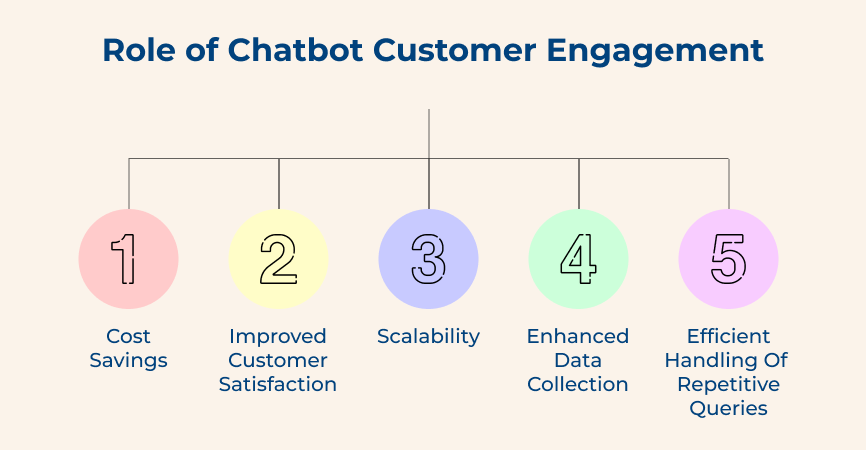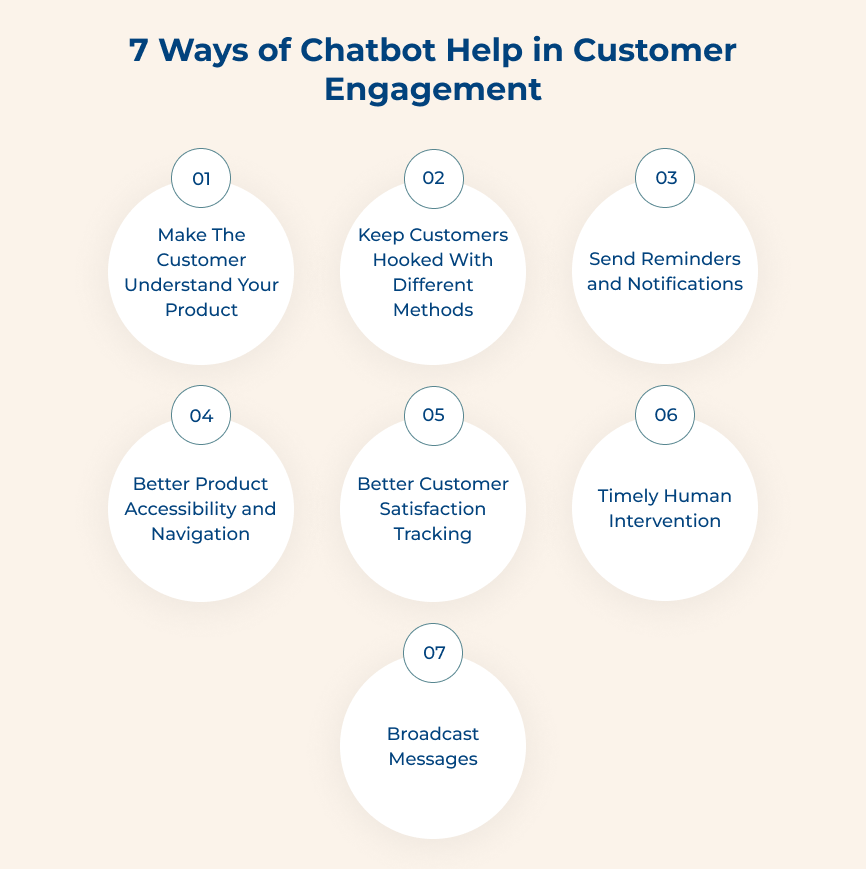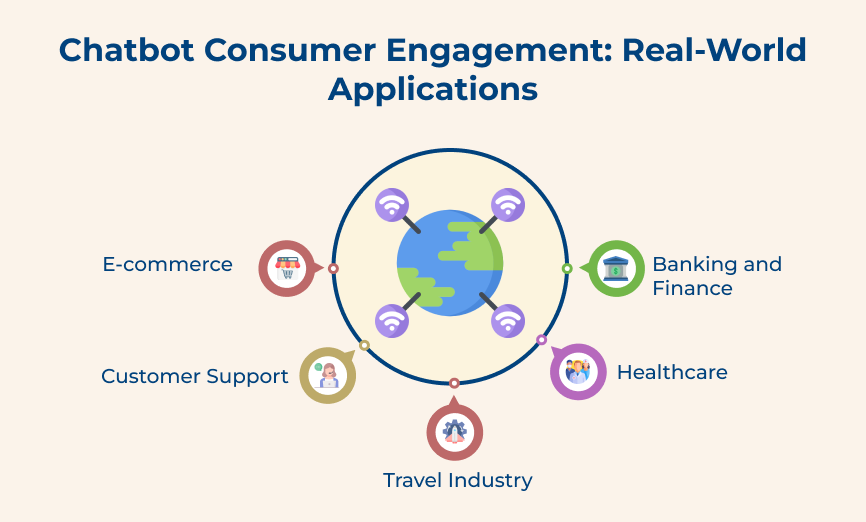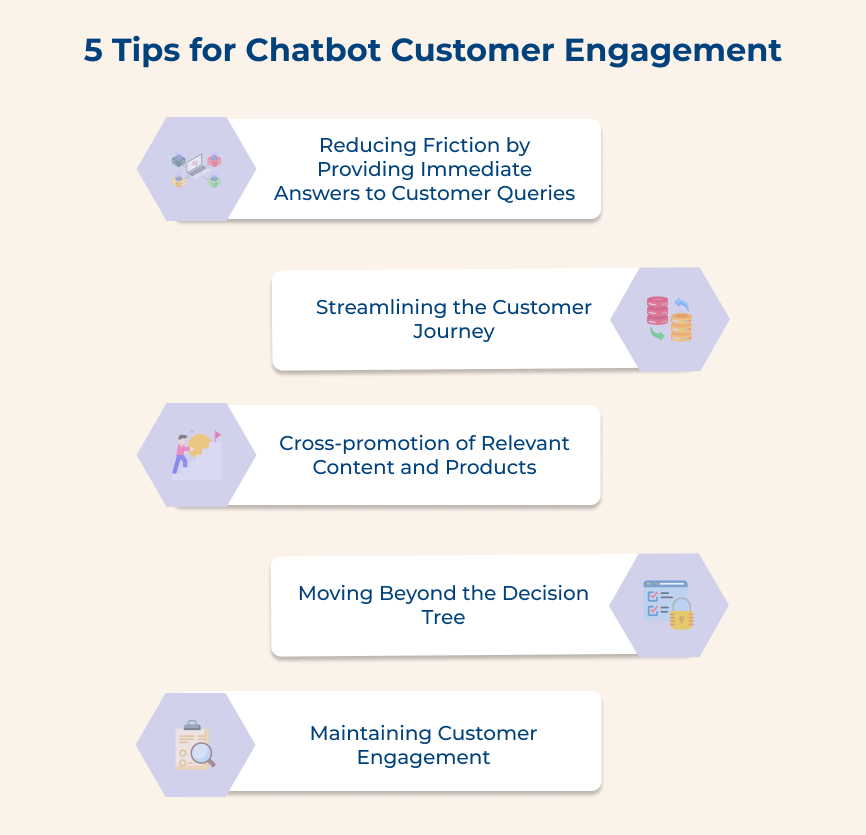1. Make the Customer Understand Your Product
Customer engagement is a crucial aspect of any business and chatbots have become valuable tools for achieving it. One effective strategy employed by chatbots is to make the customer understand the solution being offered. The importance of the strategy lies in the fact that customers need to fully comprehend what they are purchasing or using.
Let’s say a customer visits an e-commerce website and is interested in purchasing a new smartphone. The chatbot can engage with the customer by explaining the features and specifications of the available models. It can also answer any customer questions regarding compatibility, warranty or return policies.
Ways to implement:
- Use conversational language: AI-powered chatbots should be programmed to convey information conversationally, using language that is easy to understand. It helps engage the customer and avoids any confusion or frustration.
- Provide detailed product descriptions: Chatbots should be equipped with comprehensive information about the solution offered. It includes specifications, benefits and any other relevant details that can help the customer make an informed decision.
2. Keep Customers Hooked with Different Methods
Businesses must keep their customers engaged and hooked to their brand due to the ever-increasing competition. One effective strategy to achieve it is by employing various methods to continuously captivate the audience. Engaged customers are more likely to become loyal brand advocates and make repeat purchases.
A company could utilize chatbots to provide personalized recommendations based on a customer’s previous interactions and purchase history. The recommendations can help keep customers interested and encourage them to explore more solutions.
Ways to implement:
- Proactive communication: Chatbots can be programmed to initiate conversations with customers, offering proactive assistance, product updates or special offers. It keeps customers engaged even when they are not actively seeking information.
- Interactive and gamified features: Including interactive elements or gamified features within chatbot interactions can make the customer experience more enjoyable and captivating, encouraging customers to continue engaging with the brand.
3. Send Reminders and Notifications
One highly effective strategy for engaging customers is by utilizing chatbots to send reminders and notifications. The purpose of this strategy is to keep customers informed and engaged by sending timely notifications about upcoming events, new product releases, promotions, or important updates.
Let’s consider an online retail store that launches a new collection of clothing. Implementing the strategy allows businesses to utilize chatbots to send notifications to their customers, informing them about the new collection or offering a personalized discount code.
Ways to implement:
- Set up an automated chatbot system: Invest in chatbot technology that can be programmed to send reminders and notifications at scheduled intervals or based on specific triggers.
- Segment your customer base: Create customer segments based on their preferences, past purchases or demographic information. Use the segmentation to personalize the reminders and notifications sent by chatbots.
4. Better Product Accessibility and Navigation
Providing customers with seamless accessibility and easy navigation to the products is crucial for achieving customer engagement. Customers now expect efficiency when browsing products, and if they encounter any difficulties, they are likely to abandon their purchase.
A prime example of how chatbots aid in customer engagement and accessibility can be seen in e-commerce platforms. Chatbots can assist customers in finding the right products by asking them common questions or questions about their preferences and narrowing down the search results. They can provide real-time updates on product availability and shipping status.
Ways to implement:
- Optimize website navigation: Ensure that the website is easy to navigate with clear categories, search functionalities and filters to help customers find products quickly.
- Simplify the checkout process: Streamline the purchasing process by integrating chatbots that can guide customers through the checkout process, answer their questions and address any concerns.
5. Better Customer Satisfaction Tracking
When it comes to chatbot customer engagement, they significantly improve customer satisfaction. Businesses can utilize customer service chatbots to effectively monitor and measure customer satisfaction levels. It allows companies to gather valuable insights that can help them make informed decisions and improve their solutions.
Let’s consider a chatbot deployed on a company’s website. It can engage with customers, ask about their experience and receive feedback in real-time. The feedback can be analyzed to identify trends, areas of improvement and even create personalized offers or recommendations for customers.
Ways to implement:
- Real-time feedback: Chatbots can ask customers for feedback immediately after a purchase or interaction, allowing businesses to gauge customer satisfaction in real-time.
- Sentiment analysis: Sentiment analysis can be conducted to identify sentiments associated with customer satisfaction by analyzing the language and tone used by customers during conversations with chatbots.
6. Timely Human Intervention
Timely human intervention refers to the seamless transition from chatbot communication to human interaction when necessary. It ensures the customers receive the personalized attention they need and helps in building stronger customer relationships. The strategy helps businesses strike a balance between automation and the human touch, providing an enhanced customer experience.
A customer contacts a chatbot for assistance in troubleshooting their technical issue. The chatbot provides initial suggestions and basic troubleshooting steps. The problem persists and as a result, the customer expresses frustration. Recognizing the need for timely human intervention, the chatbot seamlessly transfers the conversation to human customer support teams.
Ways to implement:
- Design clear escalation paths: Establish clear guidelines for chatbots to identify when a human should intervene. It could be based on specific keywords or the complexity of the query.
- Enable seamless transfer: Ensure there is a smooth handover from chatbot to human representative. It prevents the customer from repeating information and allows for a seamless conversation.
7. Broadcast Messages
Broadcast messages allow chatbots to send out mass messages to a broad audience simultaneously. The strategy is highly effective in reaching a large number of customers with relevant information and updates. It enables businesses to keep their customers informed and engaged, leading to increased brand loyalty.
The importance of the broadcast messages strategy lies in its ability to deliver time-sensitive and personalized information. An e-commerce company can use broadcast messages to notify customers about flash sales, new product launches or exclusive discounts. The direct instant communication method ensures that customers are aware of the latest offers and encourages them to make a purchase.
Ways to implement:
- Scheduled messaging: Plan and schedule broadcast messages at specific times or dates to ensure timely delivery. It allows businesses to optimize their messaging based on customer behavior and engagement patterns.
- Interactive content: Incorporate interactive elements such as quizzes, polls or games in your broadcast messages. It not only captures the customers’ attention but also encourages active participation and further engagement with the brand.
Chatbot Consumer Engagement: Real-World Applications
Let us go through the real-world applications of chatbots, illustrating how they have become indispensable tools in the quest for optimal consumer engagement.















